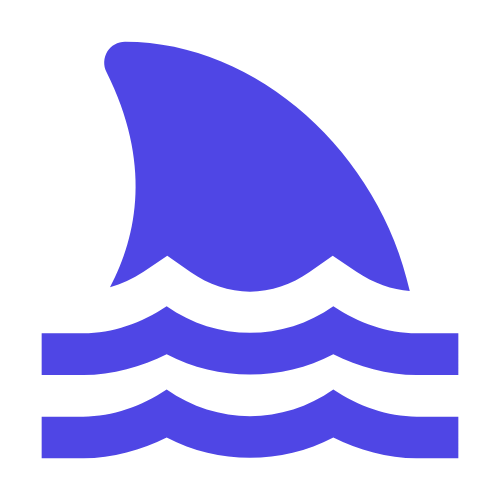In Flutter development, the process from project planning to final deployment is critical. This blog will describe how to choose the right development tools, design efficient code structures, and strategies for achieving the best user experience. Through these steps, readers can gain insight into the development process of Flutter and improve their technical writing skills.
Title: Flutter development practical case: build a complete Flutter project process from scratch.
In this blog, we'll show you how to build a complete Flutter project from scratch. We will cover everything from choosing the right development tools, designing efficient code structures, and key strategies for achieving the best user experience.
Through this blog, you will be able to gain insight into the development process of Flutter and improve your skills in technical writing.
\n#
1. Project planning and preparation.
Before starting any project, detailed project planning and preparation work is required first. This includes identifying project goals, requirements analysis, functional design, and user interface design.
For the Flutter project, it is also necessary to choose the appropriate development tools and technology stack.
# Select development tools: #
- # IDE/Code Editor #: It is recommended to use Android Studio or Visual Studio Code as the main development tool.
They all support Flutter plugins, providing rich debugging functions and code completion support.
- # Dart SDK #: Make sure you have the latest version of the Dart SDK installed.
It can be downloaded and installed at [official website] (https://dart.dev/get-dart).
- # Dependency Management Tools #: Use pubManage project dependencies as a package manager.
\n#
2. Create a new project.
Once the development environment is ready, you can create a new Flutter project. The following is a simple command line example:
flutter create my_first_app
cd my_first_app
\n#
3. Design efficient code structures.
A good code structure is essential for maintaining large projects. Flutter provides a variety of ways to organize and manage code, such as using modular programming, componentized design, and state management.
Here are some suggestions:
- # Modular Programming #: Separate different functional modules into their own files, such as main.dartResponsible for starting the application, home_page.dartResponsible for the main page logic, details_page.dartResponsible for details page logic, etc.
- # Componentized Design #: Using Flutter's Widget system, the UI is split into multiple widgets, each of which only focuses on its own responsibilities.
This improves the readability and reusability of the code.
- # State Management #: For complex applications, state management libraries such as Provider, Riverpod or Bloc can be used to manage the state of the application.
These libraries can help us better organize and manage the global state and avoid the problems of directly manipulating the underlying data sources.
\n#
4. Implement key functions.
Next, we will introduce how to implement some key functions, such as network request, local storage and navigation. These features are a fundamental part of most modern mobile applications.
# Network Request #:
Use httpPackage to make HTTP requests.
Here is a simple example:
dart
import 'package:http/http.dart' as http;
Future fetchData() async {
final response = await http.get(Uri.parse('https://api.example.com/data'));
if (response.statusCode == 200) {
// 处理响应数据
} else {
// 处理错误
}
}
shared_preferencesPackage to hold simple key-value pair data. Here is an example:
dart
import 'package:shared_preferences/shared_preferences.dart';
Future savePreference() async {
SharedPreferences prefs = await SharedPreferences.getInstance();
prefs.setString('key', 'value');
}
Future getPreference() async {
SharedPreferences prefs = await SharedPreferences.getInstance();
return prefs.getString('key') ?? 'default value';
}
NavigatorClass to achieve jumps between pages. Here is a basic example:
dart
import 'package:flutter/material.dart';
void main() {
runApp(MyApp());
}
class MyApp extends StatelessWidget {
@override
Widget build(BuildContext context) {
return MaterialApp(
home: HomePage(),
);
}
}
class HomePage extends StatelessWidget {
@override
Widget build(BuildContext context) {
return Scaffold(
appBar: AppBar(title: Text('Home')),
body: Center(child: ElevatedButton(onPressed: () {
Navigator.push(context, MaterialPageRoute(builder: (_) => DetailsPage()));
}, child: Text('Go to Details'))),
);
}
}
class DetailsPage extends StatelessWidget {
@override
Widget build(BuildContext context) {
return Scaffold(
appBar: AppBar(title: Text('Details')),
body: Center(child: Text('Details Page')),
);
}
}
5. Optimize user experience.
In order to provide the best user experience, the following aspects also need to be considered:
- # Performance Optimization #: Ensure that the application runs smoothly and reduces stuttering. Performance can be improved by asynchronous programming and avoiding unnecessary redraws.
- # Responsive Design #: Dynamically adjust the layout according to the screen size of the device to ensure a good display on different devices.
This can be achieved using components such as MediaQuery and FlexibleSpaceBar.
- # Internationalization Support #: If the target market involves multiple countries and regions, consider adding internationalization support so that users can choose their own language preferences.
Flutter provides a built-in internationalization mechanism that makes this easy.
\n#
6. Test and deploy.
After all development work is completed, adequate testing is also required to ensure the stability and reliability of the application. Flutter provides a variety of testing frameworks, such as Widget Test and Integration Test, to help developers write automated test scripts.
Finally, the application will be released to major platforms (such as Google Play and Apple App Store).
Until then, make sure to follow the release guidelines of each platform and have the necessary materials such as application icons, screenshots and descriptions ready.
Through the above steps, you should be able to successfully build a complete Flutter project.
Hope this blog can help you better understand Flutter's development process and achieve greater success in future projects!





